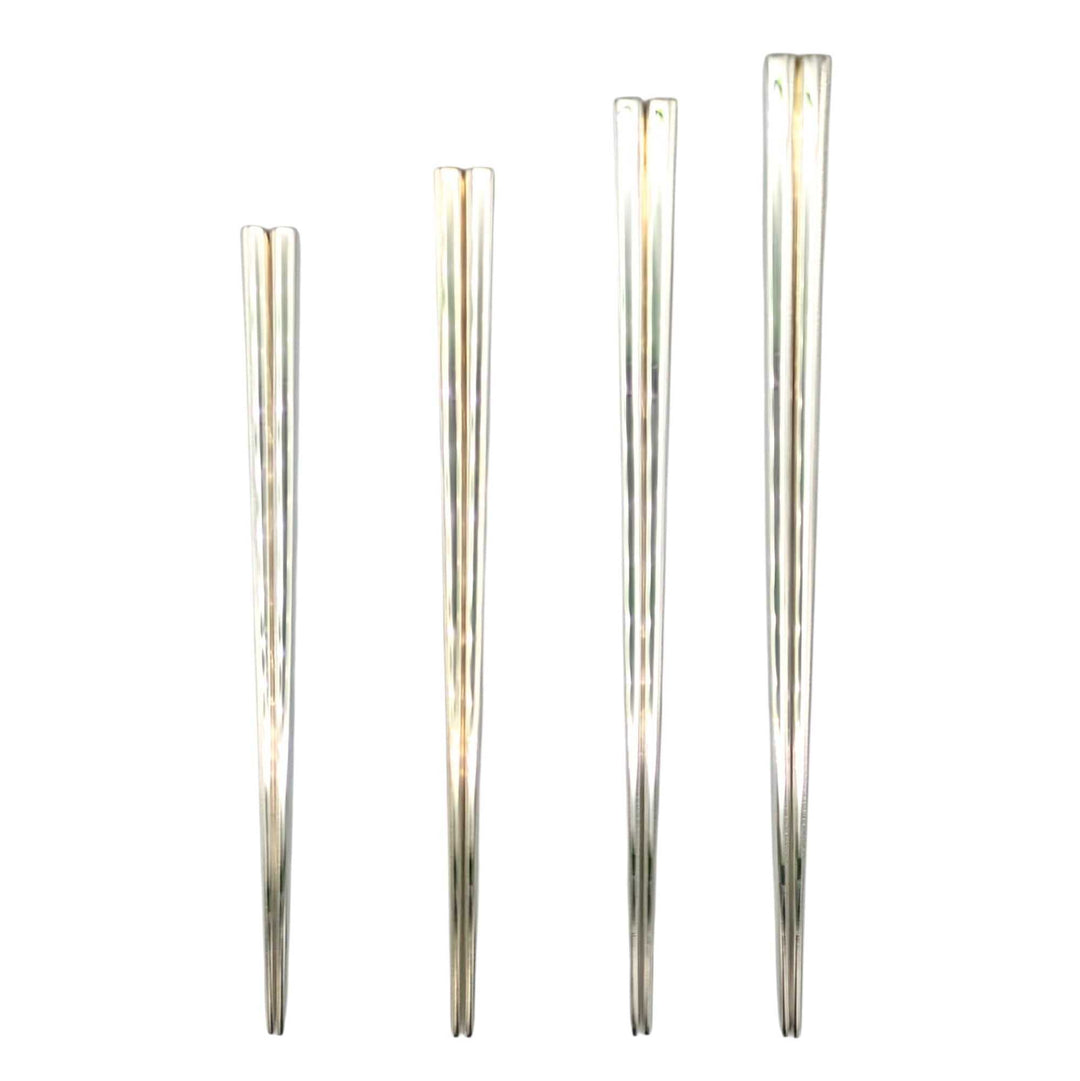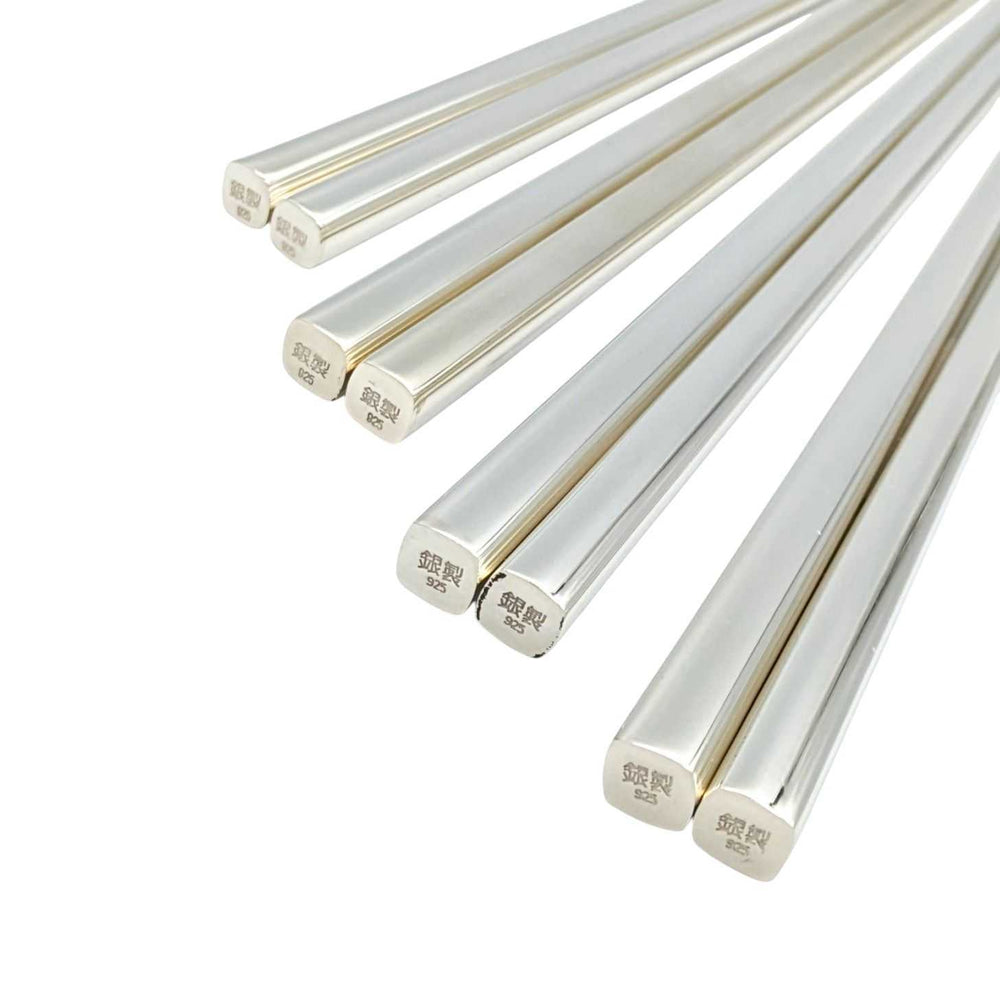Best Chopsticks for Sushi: How to Choose & Use Them
Sushi, a cornerstone of Japanese cuisine, is not just about the ingredients but also about the experience of enjoying it. The right pair of chopsticks plays a significant role in fully appreciating sushi's delicate flavors. In this article, we'll explore the best chopsticks for sushi and delve into the cultural significance of choosing the right utensils for different types of dishes.

Why the Right Chopsticks Make a Difference for Sushi
Sushi is crafted to highlight the natural aroma and umami of its ingredients. The material and shape of your chopsticks affect the subtle details of how the food feels when you lift it and taste it.
Wooden chopsticks, for example, are less slippery and easier to grip. This helps you pick up a piece of sushi without breaking its shape. For visitors from overseas, using the correct tools is a wonderful way to connect with Japanese dining traditions.
The Japanese Tradition of Choosing Chopsticks for Different Dishes
In Japan, there's a time-honored tradition of pairing the right chopsticks with the right dish. For sushi, wooden chopsticks (often called shiraki no hashi in Japanese) are often favored because they don't interfere with the subtle taste or aroma of the fish, and they convey a sense of cleanliness. For tempura, lacquered chopsticks are preferred, as they offer a non-slip surface ideal for handling the oily dish. Additionally, long serving chopsticks (saibashi) are often used to present dishes elegantly, further enhancing the dining experience. This thoughtful pairing of food and utensils is a hallmark of Japanese culinary culture, transforming each meal into a deeper, more refined experience.
Key Features of the Best Chopsticks for Sushi
To make your sushi taste even better, it's important to understand the characteristics of the chopsticks you're using. The material, shape, and weight can significantly influence both the ease of use and the overall dining experience.
Wooden Chopsticks
Many sushi restaurants use disposable chopsticks made of plain, light-colored wood (or shiraki). Since the wood has almost no scent, it is perfect for tasting the subtle flavors of sushi. Disposable chopsticks are also viewed as very clean because they are only used once.
Slim-Tipped Chopsticks
Chopsticks with slender tips make it easy to grasp the fish and rice without crushing the sushi. They also encourage graceful movements as you bring the food to your mouth. The thin tips allow you to support the small, delicate piece of sushi beautifully.
Lightweight, Easy-to-Handle Materials
Bamboo or wood chopsticks that are lightweight are comfortable to hold and won't tire your hand during a longer meal. Their balanced, effortless feel makes sushi dining a refined and enjoyable experience.
How to Eat Sushi with Chopsticks

The Proper Way to Hold Chopsticks
The basic way to hold chopsticks is to hold the top stick like a pencil while keeping the bottom stick still and fixed. This grip keeps the tips stable so you can grasp the sushi firmly.
(You can find more detailed instructions on how to use chopsticks in the Ginza Natsuno guide.)
Tips for Gracefully Eating Nigiri Sushi
- When picking up nigiri sushi, it's best to hold the piece at an angle and gently lift it, avoiding any pressure that could cause the rice to fall apart.
- Be careful not to lift the sushi straight up or press too hard, as this can cause the rice to fall away.
- Nigiri sushi is usually served in single bite-sized pieces. It is considered polite to eat the whole piece in one go, rather than taking a bite and leaving the rest on the plate.
Handling Rolls: Gunkan, Hosomaki, and Uramaki
- For rolled sushi, such as gunkanmaki (which has a base of rice wrapped in seaweed and topped with soft ingredients like salmon roe or sea urchin), a gentle touch is key. The toppings can easily spill. You can gently support it with your chopsticks as you lift it, or it is acceptable to use your fingers. Gently press on the seaweed wrapper to keep the ingredients from spreading.
- For thin rolls (hosomaki), it is easy to maintain the balance of seaweed, rice, and filling. Lift the roll by holding the center with your chopsticks.
- Thick rolls (futomaki) or rolls with many ingredients can be heavy and may break. Try to support the roll on both ends with your chopsticks for a cleaner lift.
Soy Sauce Etiquette
There is an etiquette to dipping sushi in soy sauce. For nigiri sushi, gently tip the piece on its side and touch only the tip of the fish (neta), not the rice, into a tiny amount of soy sauce.
For sushi where the topping might fall, like gunkanmaki, you can pour a tiny bit of soy sauce directly onto the topping, or use a piece of ginger (gari) or cucumber to brush the soy sauce onto the topping. In all cases, using only a tiny bit of soy sauce is the proper and most attractive way to preserve the sushi's original flavor.
Table Manners for Eating Sushi with Chopsticks

Using Hands or Chopsticks is Fine
Traditionally, sushi is eaten with your hands, but using chopsticks is perfectly acceptable as well. Please feel free to enjoy your sushi in whichever way you prefer.
Chopstick Taboos to Avoid
There are several actions to avoid when using chopsticks in a sushi restaurant:
- Stabbing Food (Sashi-bashi): Do not stab your food with your chopsticks. This looks rough and ruins the delicate beauty of the sushi.
- Resting Chopsticks Across a Bowl (Watashi-bashi): Do not rest your chopsticks sideways across the top of your bowl or plate during the meal. This can suggest that you are finished eating and is considered poor form.
- Wavering Chopsticks (Mayoi-bashi): Do not move your chopsticks aimlessly over dishes while you decide what to pick up. This can make you seem restless and may be bothersome to others.
By avoiding these behaviors, you can create a more comfortable dining setting and fully appreciate the true appeal of sushi.
Our Recommended Chopsticks for Enjoying Sushi
At Ginza Natsuno, we offer special items that are great for daily use and will help you taste your sushi even better.
Kyoto Bamboo Genuine Lacquer Coating
Simple, light, and with fine tips that are easy to pick up food.
Gonta with Non-Slip Tips
These lacquer chopsticks have a smooth, moist grip. The tips are finished with a special lacquer powder to prevent slipping.
Weave Pattern Foil Octagonal Chopsticks
Choose the Best Chopsticks to Enhance the Flavor of Sushi
The right chopsticks can significantly enrich your sushi experience, allowing you to fully appreciate the flavors and textures. Understanding the materials, design, and etiquette associated with chopsticks will help you enjoy sushi in a more refined and thoughtful way. Explore the perfect pair for your sushi experience from the Ginza Natsuno collection and savor every bite.






